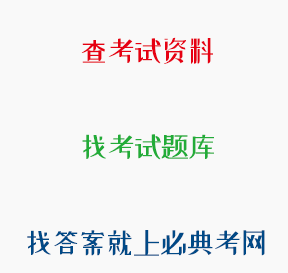正确答案: C
含有提示信息的对象框
题目:在PowerPoint2003中,占位符的实质是( )。
解析:占位符就表现为一个虚框,虚框内部往往有"单击此处添加标题"之类的提示语,一旦鼠标点击之后,提示语会自动消失。当我们要创建自己的模板时,占位符就显得非常重要,它能起到规划幻灯片结构的作用。故选择C。
查看原题 查看所有试题
学习资料的答案和解析:
[单选题]学生学习"功=力B距离",这种学习属于( )。
规则或原理学习
解析:根据加涅的学习层次分类,规则或原理学习指学习两个或两个以上概念之间的关系。题目中,"功=力B距离"涉及功与力和距离之间的关系。
[单选题]学生对自己人际关系的意识,属于对下列( )的自我意识。
社会自我
解析:个体自我意识的发展经历了从生理自我到社会自我,再到心理自我的过程。学生对自己人际关系的意识,属于社会自我的自我意识。儿童在3岁以后,自我意识发展到社会自我阶段,至少年期基本成熟。儿童从轻信成人的评价逐渐过渡到自我独立评价,自我评价的独立性、原则性、判断性正在迅速发展,对道德行为的判断能力,也逐渐达到了前所未有的水平,从对具体行为的评价发展到有一定概括程度的评价。故选择C。A选项,生理自我是自我意识的原始形态。它始于儿童1周岁,到3周岁左右基本成熟。(自我意识的发展的第一个飞跃期)B选项,心理自我是从青春期开始发展和形成的。这时,青年开始形成自觉地按照一定的行动目标和社会准则来评价自己的心理品质和能力。
[单选题]班主任在班级管理中的地位不包括( )。
是班级制度的贯彻者
解析:班主任在班级管理中的地位包括:班集体的设计者,班级组织的领导者、教育者,协调班级人际关系的艺术家。
[单选题]作为教学的一部分,课堂管理能够教给学生一些行为准则,并促使学生行为从他律到自律的转变。这说明课堂管理具有( )。
发展功能
解析:课堂管理是指教师为有效利用时间,创造愉快的和富有建设性的学习环境以及减少问题行为而采取的组织教学、创设学习环境、处理课堂行为等一系列活动与措施。其功能主要体现在以下三个力‘面:①维持功能。课堂管理的维持功能是指课堂管理能够在课堂教学中,持久地维持良好的学习环境,有效地排除各种干扰因素,使学生充分地参与到学习活动中。维持功能是课堂管理的基本功能。②促进功能。课堂管理的促进功能是指良好的课堂管理能够提升课堂教学的效果,促进学生的学习。③发展功能。在课堂管理中,教师制定的一些行为准则,可以促进学生从他律走向自律,帮助学生获得自我管理能力,使学生逐步走向成熟。
[单选题]请阅读 Passage 1,完成1~5小题。
Passage 1
In the field of psychology,there has long been a certain haziness surrounding the definition of creativity,an I-know-it-when-I-see-it attitude that has eluded a precise formulation.During our conversation,Mark Beeman,a cognitive neuroscientist at Northwestern University,told me that he used to be reluctant to tell people what his area of study was,for fear of being dismissed or misunderstood.What,for instance,crosses your mind when you think of creativity? Well,we know that someone is creative if he produces new things or has new ideas.And yet,as John Kounios,a psychologist at Drexel University who collaborates frequently with Beeman,points out,that view is wrong,or at least not entirely right."Creativity is the process,not the product," he says.
To illustrate,Beeman offers an example.Imagine someone who has never used or seen a paperclip and is struggling to keep a bunch ofpapers together.Then the person comes up with a new way of bending a stiff wire to hold the papers in place. "That was very creative," Beeman says.On the flip side,if someone works in a new field-Beeman gives the example of nanotechnology-anything that he produces may be considered inherently "creative".But was the act of producing it actually creative? As Beeman put it,"Not all artists are creative.And some accountants are very creative."
Insight,however,has proved less difficult to define and to study.Because it arrives at a specific moment in time,you can isolate it,examine it,and analyze its characteristics."Insight is only one part of creativity," Beeman says."But we can measure it.We have a temporal marker that something just happened in the brain.I'd never say that's all of creativity,but it's a central, identifiable component." When scientists examine insight in the lab.they are looking at what types of attention and thought processes lead to that moment of synthesis: If you are trying to facilitate
a breakthrough,are there methods you can use that help? If you feel stuck on a problem,are there tricks to get you through?
In a recent study,Beeman and Kounios followed people's gazes as they attempted to solve what's called the remote-associates test,in which the subject is given a series of words,like "pine" "crab" and "sauce" and has to think of a single word that can logically be paired with all of them.They wanted to see if the direction of a person's eyes and her rate ofblinking could shed light on her approach and on her likelihood of success.It turned out that if the subject looked directly at a word and focused on it-that is,blinked less frequently,signaling a higher degree of close attention-she was more likely to be thinking in an analytical,convergent fashion,going through possibilities that made sense and systematically discarding those that didn't.If she looked at "pine" say,she might.be thinking of words like "tree" "cone" and "needle" ,then testing each option to see if it fit with the other words.When the subject stopped looking at any specific worD.either by moving her eyes or by blinking,she was more likely to think of broader,more abstract associations.That is a more insight-oriented approach."You need to learn not just to stare but to look outside your focus," Beeman says.(The solution to this remote-associates test: "apple" .)
As it turns out,by simple following someone's eyes and measuring her blinks and fixation times,Beeman's group can predict how someone will likely solve a problem and when she is nearing that solution.That's an important consideration for would-be creative minds: it helps us understand how distinct patterns of attention may contribute to certain kinds ofinsights.
Which of the following is closest in meaning to the underlined word "haziness" in PARAGRAPH ONE?
Vagueness.
解析:词汇题。根据第一段中的“In the field of psychology,there has long been a certain haziness surrounding the definition of creativity,an I-know-it-when-I-see-it attitude that has eluded a precise formulation.”可知,在心理学领域,“创造性”一直没有形成准确的定义。大家所持的态度就是“当我看到创造力的时候,我就知道什么是创造力”,以这种态度避开了对创造力定义的精确化。既然是避开了精确化,那

 川公网安备 51012202001360号
川公网安备 51012202001360号